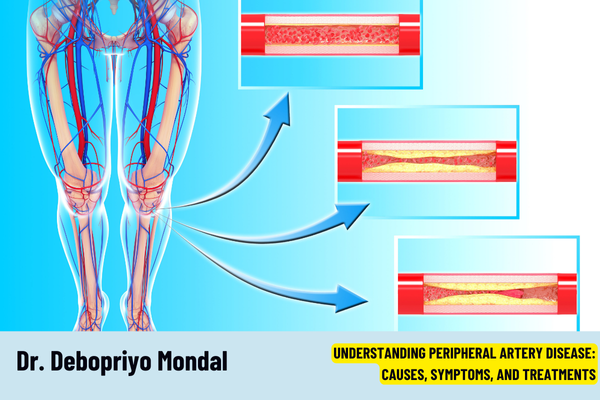Peripheral Artery Disease (PAD) is a common circulatory issue that affects millions worldwide. Dr. Debopriyo Mondal, one of the best cardiologists in Kolkata, provides an insightful overview of PAD, its causes, symptoms, and treatment options.
Causes of PAD: PAD occurs when the arteries that supply blood to the limbs become narrowed or blocked due to atherosclerosis, the buildup of fatty deposits. Key risk factors include:
- Smoking: Significantly increases the risk of PAD.
- Diabetes: Can accelerate artery damage.
- High Blood Pressure: Contributes to arterial damage.
- High Cholesterol: Leads to plaque buildup.
- Family History: Genetic predisposition to vascular diseases.
Symptoms to Watch For:
- Claudication: Pain, cramping, or weakness in the legs during physical activity, which typically eases with rest.
- Rest Pain: Persistent pain in the feet or toes, especially at night.
- Cold Extremities: Coldness in the lower legs or feet.
- Non-Healing Wounds: Sores or ulcers on the feet or legs that don’t heal properly.
Treatment Options:
- Lifestyle Changes: Quitting smoking, managing diabetes, and adopting a healthy diet.
- Medications: Drugs to improve blood flow, lower cholesterol, and manage blood pressure.
- Exercise Therapy: Structured exercise programs to improve circulation and reduce symptoms.
- Surgical Interventions: Procedures like angioplasty or bypass surgery to restore proper blood flow.
Dr. Debopriyo Mondal emphasizes the importance of early diagnosis and comprehensive management to prevent complications. For personalized care and effective treatment, consult Dr. Mondal, a leading cardiologist in Kolkata, to address and manage Peripheral Artery Disease efficiently.
